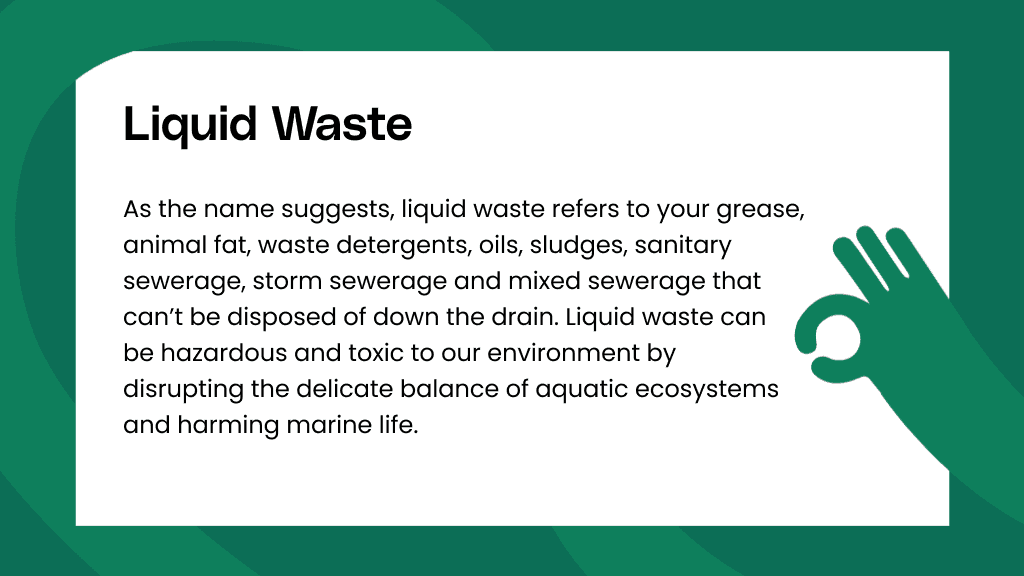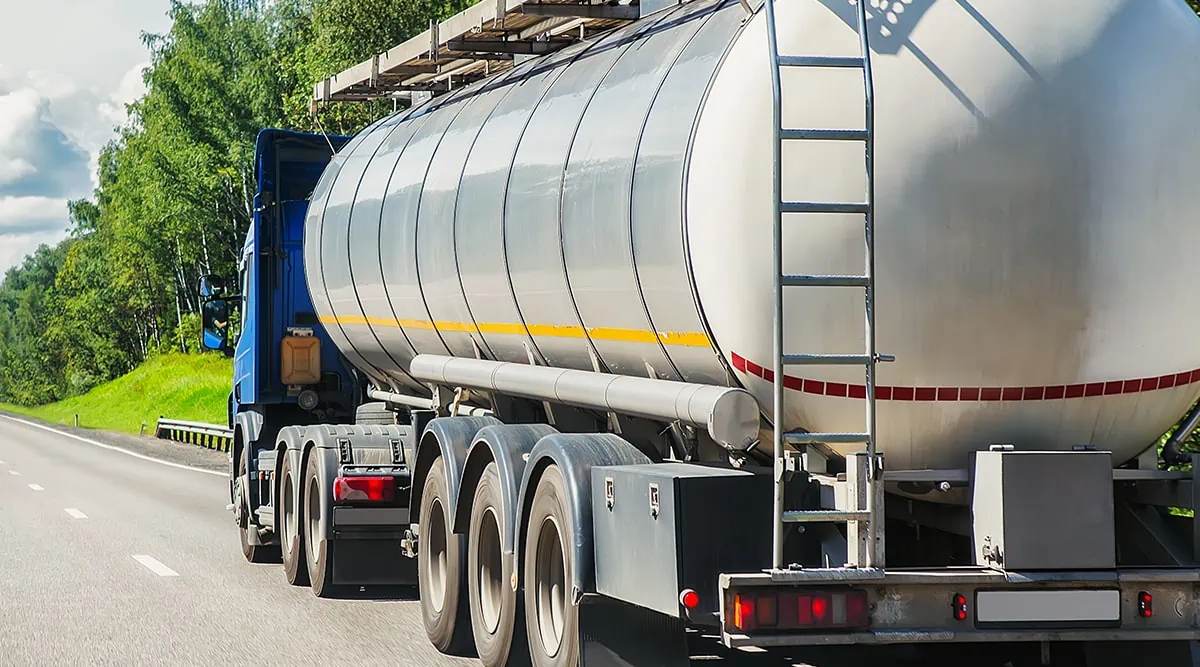Examine This Report on Reclaim Waste
Examine This Report on Reclaim Waste
Blog Article
The 10-Minute Rule for Reclaim Waste
Table of ContentsThe Greatest Guide To Reclaim WasteThe Definitive Guide to Reclaim WasteNot known Facts About Reclaim WasteWhat Does Reclaim Waste Mean?Not known Details About Reclaim Waste The 3-Minute Rule for Reclaim Waste

Never put damaging compounds down sinks, bathrooms or stormwater drains pipes Substances consisting of petroleum, oil, oil, chemicals and herbicides, and solvents such as paint strippers ought to not be poured down sinks, toilets or stormwater drains pipes. These materials are tough to remove in the sewer therapy process and trigger air pollution issues in our local rivers.

Liquid waste is a term that covers a wide range of products, there's a great factor why leaving its disposal to the specialists is suggested. Liquid waste is non-solid material that has no additional usage and needs to be dealt with and thrown away according to local, state and federal laws.
Unknown Facts About Reclaim Waste
Although examples of liquid waste can consist of wastewater, fats, oils or oil, utilized oil, fluids, solids, gases or sludges and harmful house fluids, there are some that are considered to be much more harmful than others when it comes to the environment and the health of animals and people alike. It's consequently that each state and area have stringent policies connected to fluid waste monitoring.
Fluid waste can be stored in holding storage tanks or packaged in drums, intermediate mass containers or approved little containers prior to either being treated or eliminated by means of outsourced vacuum trucks. Offered the nature of the materials, fluid waste can not go in the general waste stream and there are rigorous regulations on just how to take care of it properly.
(https://reclaimwaste1.bandcamp.com/album/reclaim-waste)Depending on a resolution of the degree of danger, it may be essential to remediate those websites. Furthermore, unsafe liquid chemical wastes are regulated waste and has to be tracked based on the state waste legislation. Under the chain of guardianship and obligations, owners are accountable and accountable for waste generated by a service.
Among the core applications for superabsorbent polymers (SAPs) is fluid waste solidification. liquid waste removal melbourne. SAPs are utilized by waste management specialists to avoid potentially unsafe fluids from entering waterways, groundwater aquifers, and various other sensitive settings. Since fluids can swiftly carry impurities into ecological receptors and possibly add to geotechnical failures, liquid wastes are usually forbidden from disposal in garbage dumps
Reclaim Waste for Beginners
Primarily, cost-free liquids are fluids that divide from the solid portion of waste product. Liquid waste can consist of the following: HDD mud and cuttings Land fill leachate Wastewater therapy sludge & biosolids Dug up sediments Oil and gas drill cuttings Clearing up fish pond filth Hydro Excavation slurry Coal burning residuals/ash Container bottom sludge Concrete grinding/polishing slurry Related Article: For a practical example of complimentary liquids dividing from waste material, take into consideration the following circumstance: A waste monitoring contractor lots a dump truck with sludge from a wastewater treatment plant's oygenation basin, during a routine maintenance event.
However, when the driver reaches the garbage dump, he notifications water leaching from the why not find out more sludge and putting from the dump truck. The lots was declined by the garbage dump and the driver was forced to take care of the waste as a fluid waste at an unique center, which enhanced the disposal fees greatly.
We additionally need to be liable for the appropriate disposal of our waste materials. It is not sufficient that we pay waste disposal firms to take care of our rubbish.
Our Reclaim Waste Ideas

Segregating your waste can begin inside the home. Segregate dry and liquid waste as well as edible waste, eco-friendly and non-biodegradable materials.
Layer the bottom with soil to soak up the wet waste. Layer the garden compost with damp and completely dry waste as well as dirt to maintain a balance in between the wet and the dry.
A Biased View of Reclaim Waste
Cover the compost container. As soon as a week, include dirt on top of the compost. To facilitate faster disintegration, you can also add semi composted soil to the garden compost. Maintain the compost. If you observe the smell is becoming as well solid, include extra papers and paper waste or add even more openings to the garden compost container to keep the balance of the waste materials.
We also require to be accountable for the correct disposal of our waste products. It is not enough that we pay waste disposal firms to take treatment of our rubbish.
Our waste, our obligation. Have you ever before wondered what takes place to your fluid waste after it's gathered? Did you understand that fluid waste can be reused? As responsible residents, you must understand what takes place to your rubbish and where it pursues it is removed from you. Comprehending the fluid waste removal process is necessary in aiding you to segregate your waste.
The Ultimate Guide To Reclaim Waste
The ideal place is an excellent outdoor area with plenty of sunlight and air. Segregate your waste. Segregating your waste can begin inside the home. Set apart dry and liquid waste in addition to edible waste, eco-friendly and non-biodegradable materials. Constantly maintain the lid on your bins to prevent insects, worms, flies, and unpleasant odours.
You can use old garbage can, container, garden pot or old plastic drums. Drill four to five openings in the container so the air can distribute. Layer all-time low with soil to absorb the damp waste. Beginning the composting process. Layer the garden compost with damp and dry waste as well as soil to keep an equilibrium in between the wet and the dry.
Cover the compost bin. When a week, add dirt in addition to the garden compost. To promote faster decay, you can also include semi composted dirt to the compost. Keep the garden compost. If you notice the scent is ending up being as well solid, add extra papers and paper waste or include even more holes to the garden compost bin to maintain the balance of the waste materials.
Report this page